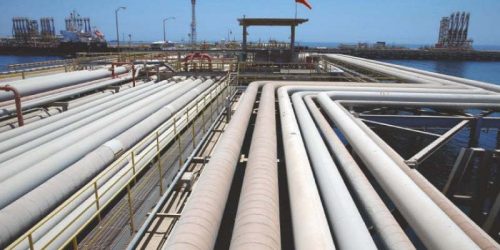Karachi — Pakistan has decided to halt gas supplies from Feb. 1 to captive power plants of non-export oriented industries using gas as a fuel to produce their own electricity, in an effort to ensure residential consumers get enough supplies, a government document said.
The decision comes at a time when Pakistan is facing a severe gas shortage at home and finding it difficult to source cargoes from the international markets.
Industrial units in Pakistan are allowed to install their captive power plants to produce electricity for their own use. And if they have surplus, they can supply to the national grid for residential or commercial consumers.
In addition, gas supplies would be halted for captive power plants of export-oriented industries from March 1, 2021, the document said.
Currently, there are 1,211 captive power units on both Sui Northern Gas and Sui Southern Gas network, consuming about 415 MMcf/d of gas. Out of this, 610 are export-oriented units and 601 are non-export oriented units, the document said.
Since November 2020, a series of meetings have been conducted to address gas shortfall issues and industries have been asked to use electricity from other sources like RLNG, coal and nuclear power, the document said.
Power generation went up by 4.3% to 7,880 GWh (10,591 MW) during December 2020, compared to 7,557 GWh (10,157 MW) during December 2019, according to data from the National Electric Power Regulatory Authority. Major contributors were coal (29%), hydel (23%), gas (16%), RLNG (14%) and nuclear (9%), the data showed.
Captive units have efficiency of 30-38%, much lower than efficient power plants having efficiency of 50% to 62%, industry sources said.
The All Pakistan Textile Mills Association, in a letter to the energy ministry, stated that the moratorium would harm the industry as it was already facing severe losses due to frequent power breakdowns, with millions of dollars’ worth of export orders being cancelled. The association further added that switching over the electricity source would increase costs.
“We believe, rather than shifting to the national grid, corporates will prefer other fuels for their power plants, like fuel oil, RLNG and coal. as cost of grid power is expected to be around Rupees 20/kwh”, said Shankar Talreja, senior research analyst at Karachi-based brokerage Topline Securities.
Talreja said that currently, a unit of electricity (Kwh) on fuel oil-based captive power plants costs around Rupees 12-13/Kwh, while it costs Rupees 8-9/Kwh, for generation based on coal.
Exports from the textile sector have shown robust growth recently, with exports in December 2020 accounting for $1.4 billion compared with $1.1 billion in December 2019, according to Pakistan Bureau of Statistics data. Exports of textiles in the six-month period ended Dec. 31, 2020 was up by 8% to $7.44 billion from the same period in 2019.
Mian Nasser Hyatt Maggo, president of the Federation of Pakistan Chamber of Commerce & Industry, said industries have already confronted many challenges particularly with respect to procurement of long-term orders for exports.






